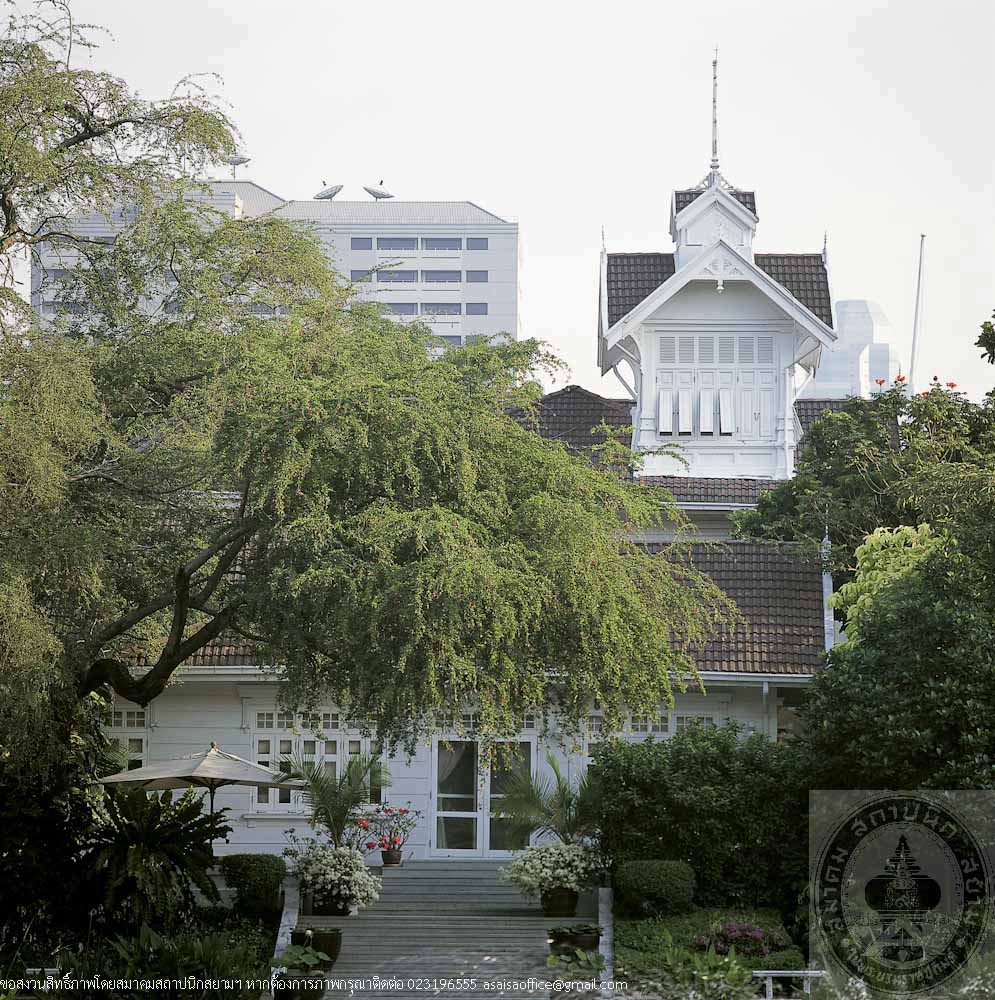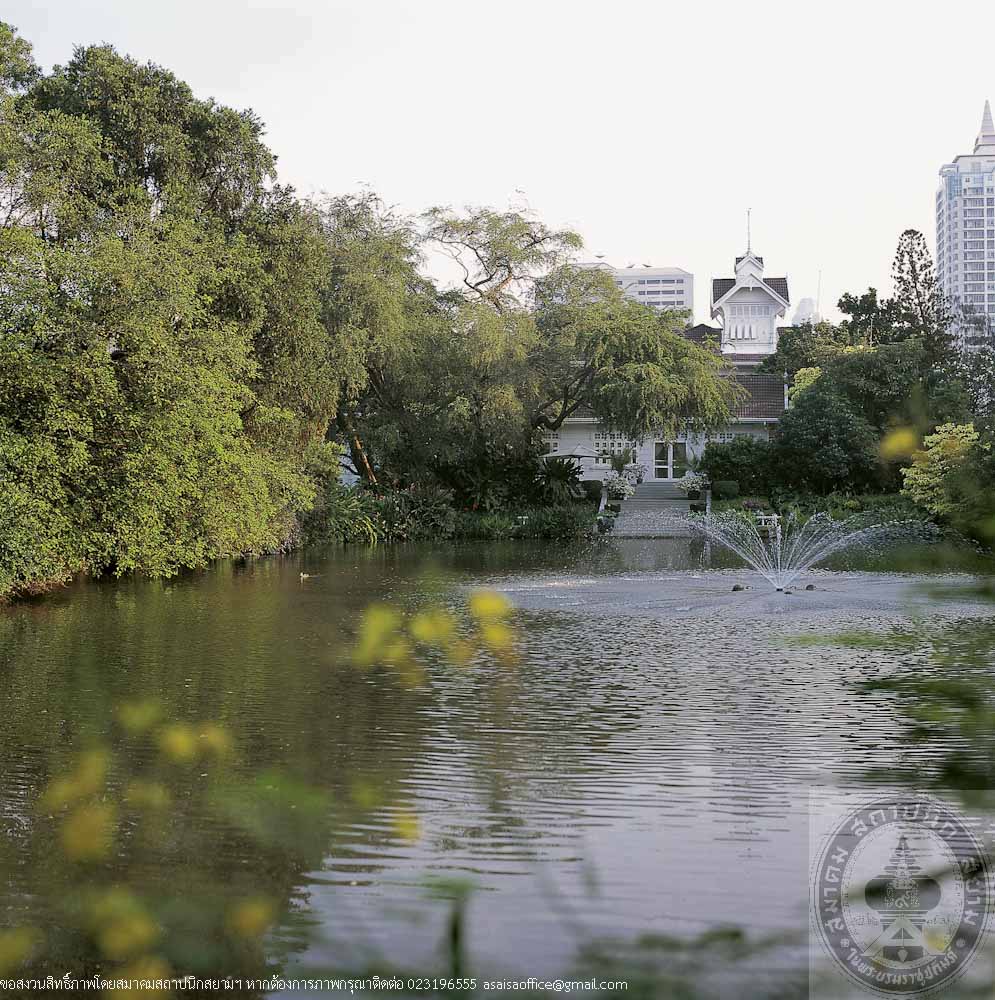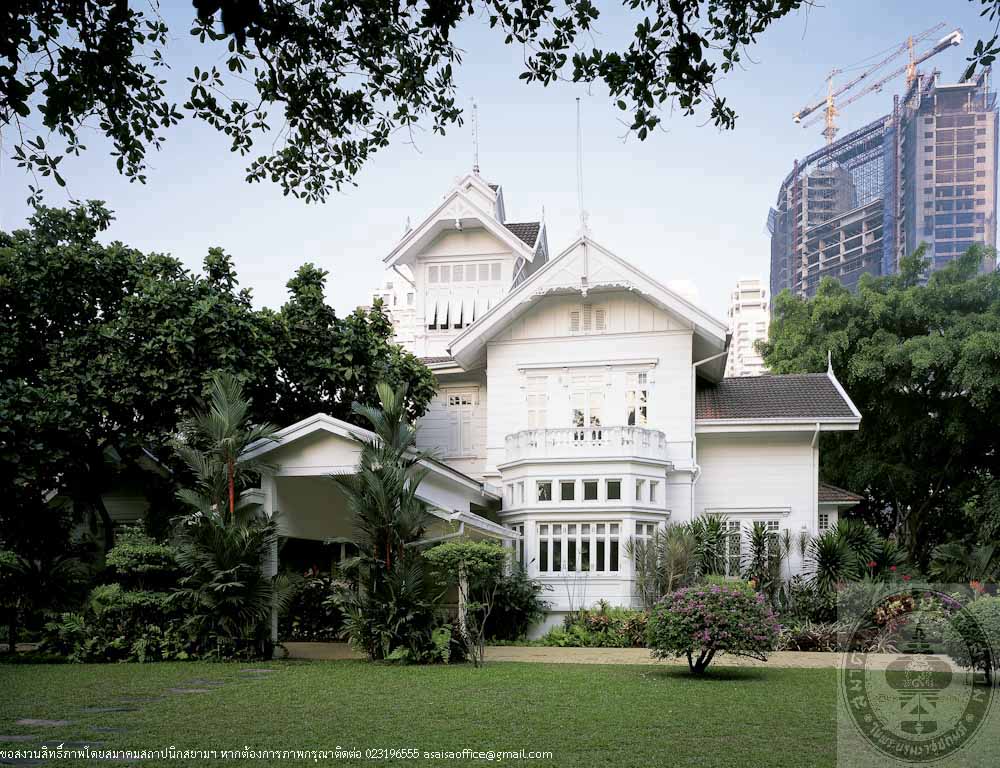บ้านพักเอกอัครราชทูตเนเธอร์แลนด์
บ้านพักเอกอัครราชทูตเนเธอร์แลนด์
ที่ตั้ง 106 ถนนวิทยุ กรุงเทพฯ
สถาปนิก/ผู้ออกแบบ -
ผู้ครอบครอง สถานเอกอัครราชทูตเนเธอร์แลนด์
ปีที่สร้าง พ.ศ. 2438 - 2443
ปีที่ได้รับรางวัล พ.ศ. 2530
ประวัติ
บ้านพักเอกอัครราชทูเนเธอร์แลนด์ เป็นสถาปัตยกรรมแบบโคโลเนียล ตัวอาคาร 2 ชั้นหลังคาจั่ว และมีส่วนหนึ่งเป็นหอคอยสูง 3 ชั้น ลักษณะเด่นคือหลังคาที่มีการซ้อนชั้นขึ้นไปในส่วนหอคอย และการตกแต่งด้วยไม้แกะสลักและเสาประดับที่ยอดจั่ว
บ้านหลังนี้เคยเป็นบ้านของนายแพทย์อัลฟองส์ ปัวส์ แพทย์หลวงชาวฝรั่งเศส ประจำพระองค์บระบาทสมเด็จพระจุลจอเกล้าเจ้าอยู่หัว ต่อมาใน พ.ศ. 2476 พระองค์เจ้าบวรเดชจึงทรงเป็นเจ้าของสืบต่อมา หลังจากนั้นในปี 2476 พระองค์เจ้าบวรเดชได้ลี้ภัยการเมืองไปอยู่ต่างประเทศแต่บ้านยังสืบทอดมาในสายตระกูลของท่านและเคยใช้เป็นที่อยู่ของบาทหลวงคาทอลิก เป็นที่ตั้งสมาคมนักเรียนเก่าอังกฤษ และที่อยู่ของทหารอังกฤษในช่วงปลายสงครามโลกครั้งที่ 2 หลังสงคราม รัฐบาลเนเธอร์แลนด์ได้ซื้อบ้านหลังนี้ใน ปีพ.ศ.2491 เพื่อใช้เป็นบ้านพักเอกอัครราชทูต และเป็นที่ทำการของสถานเอกอัครราชทูตเนเธอร์แลนแห่งแรกในประเทศไทย ซึ่งก่อนหน้านั้นมีเพียงสถานกงสุลมาตลอด

บ้านพักเอกอัครราชทูตเนเธอร์แลนด์

บ้านพักเอกอัครราชทูตเนเธอร์แลนด์

บ้านพักเอกอัครราชทูตเนเธอร์แลนด์
-

บ้านพักเอกอัครราชทูตเนเธอร์แลนด์
-

บ้านพักเอกอัครราชทูตเนเธอร์แลนด์
-

บ้านพักเอกอัครราชทูตเนเธอร์แลนด์
The Dutch Embassy Residence
Location 106 Witthayu Road, Bangkok
Architect/Designer Unknown
Proprietor Dutch Embassy
Date of Construction 1895 - 1900 AD
Conservation Awarded 1987 AD
History
The Dutch Embassy Residence is a Colonial house, 2-storey, gable roofs, with a 3-storey tower. Distingguished features are the double roof of the tower and the decorative gable corners made of woodcarvings.
The first owner of the house was Dr. Alphonse Poix, a French doctor who was a royal physician to King Rama V. Dr. Poix moved out in 1913, and then Prince Boworadet took up the place until 1933, that he fled to foreign country for political reasons. The house, however, was still his family’s possession and had been used as a residence for Roman Catholic priests, the British Alumni Assosciation, and occupied by members of the British armed forces by the end of WW II.
After the war, the Dutch Government bought the house in 1948 to be used as a residence for the Ambassador, thus the permanent Dutch Embassy was firstly established in Thailand, for there had only been a consulate in former times.